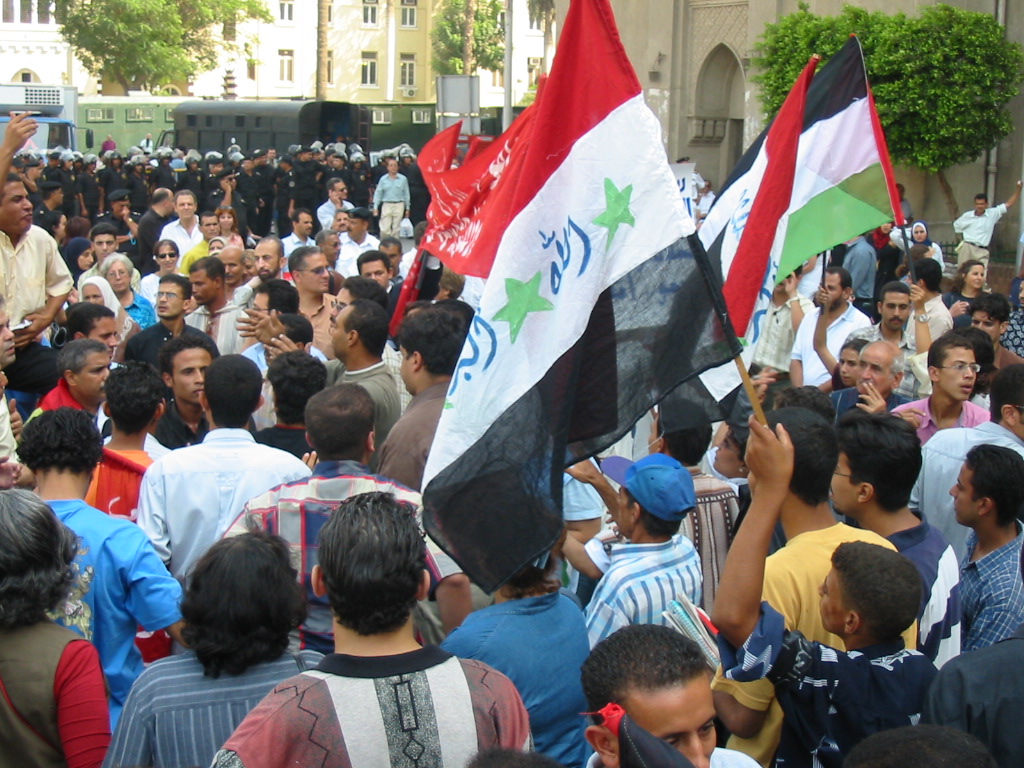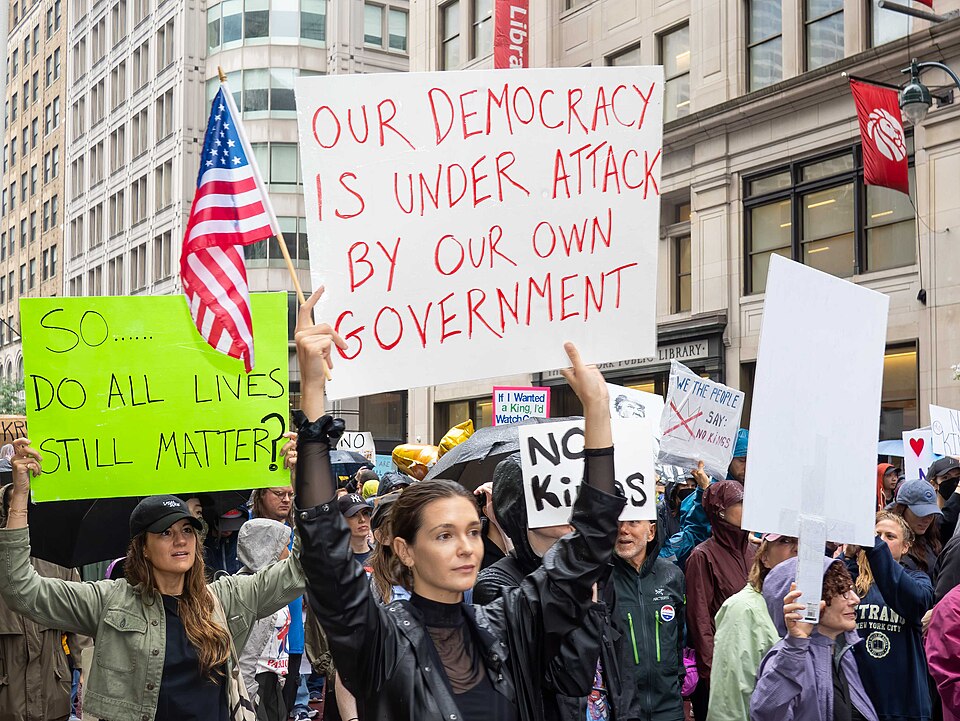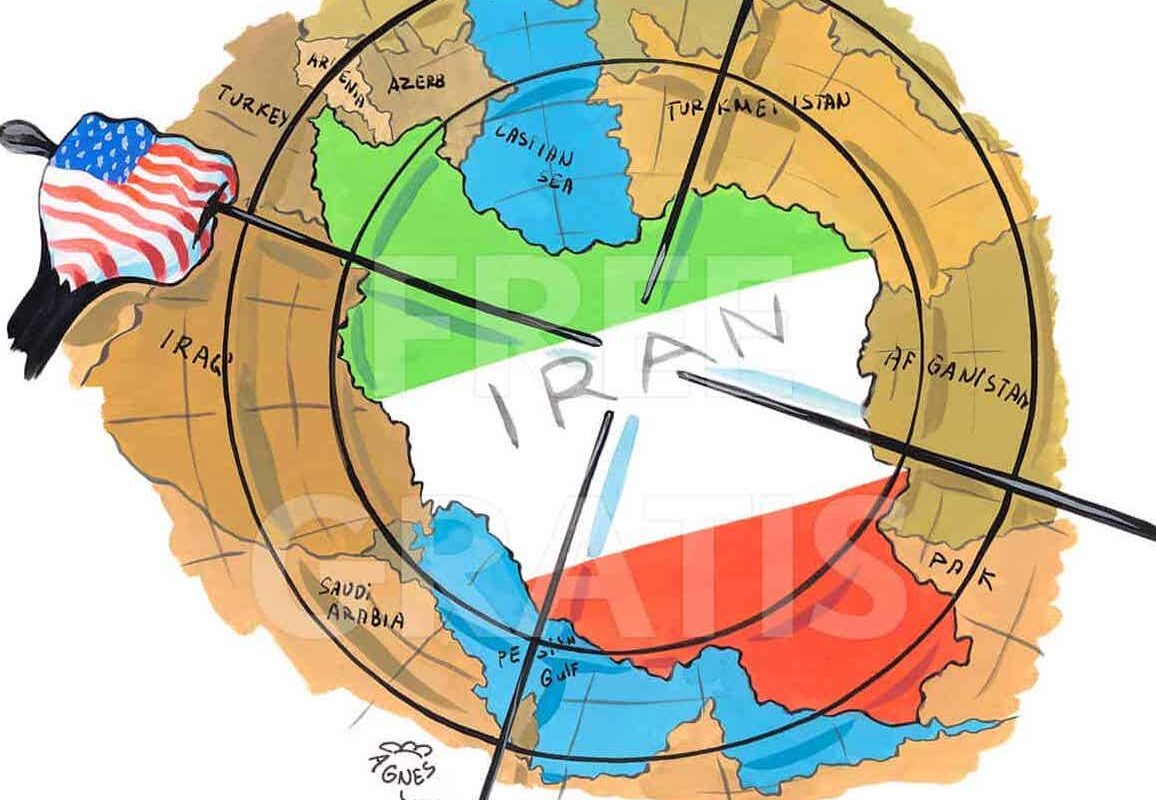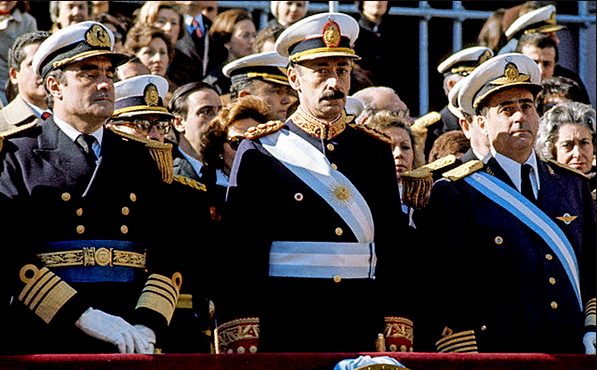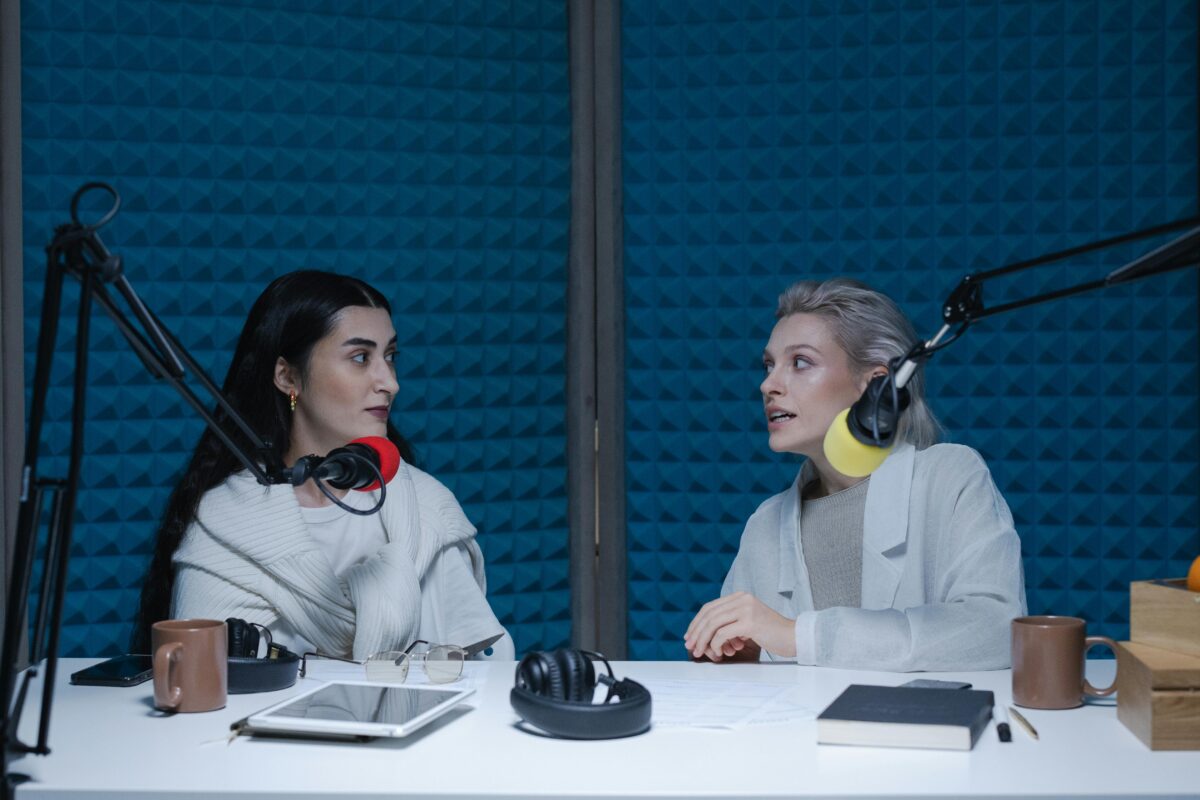Editor’s Note: Phil Butland and Helena Zohdi recently interviewed Hossam el-Hamalawy about the history of the Egyptian Left. You can read Part 1 of the Interview here and Part 2 here.
Hi again Hossam. At the end of our last interview, the Soviet Union was collapsing while the Left in Egypt – as elsewhere – was in disarray. This was also the time where you personally became more politicized, drawn toward Arab nationalism. Describe this time for our readers.
The mid-1990s were a tough time for all Egyptian activists. Between 1991 and 1992, President Hosni Mubarak and his government clamped down again on social movements while starting a number of economic reforms amid a severe debt crisis, guided by an IMF-imposed structural adjustment program (ERSAP), the details of which were hotly debated at the time. It is important to note that often, “wars on terror” go hand in hand with neoliberal reforms. Egypt is no exception in this regard.
Meanwhile, the Soviet Union was collapsing and there was plenty of propaganda about the end of history and a clash of civilizations, the need for a “third way” separate from socialism and capitalism, such as New Labour in Great Britain. Also, right-wing parties were on the rise everywhere.
I was raised in a highly political family environment, and I did read a lot. I considered myself to be left-leaning politically, but I wasn’t really sure what that meant. In this context, I started looking for political alternatives. As the Egyptian Left at that time was in bad shape, in my searching I came across the Egyptian Revolutionary Socialists.
Tell us a bit about what drew you to this particular group.
During the 1980s, the Egyptian Revolutionary Socialists were mainly Marxist study circles made up of radical Egyptian students, and Palestinian students who were studying in Egypt. While they critiqued the policies of the Soviet Union, they weren’t sure about alternatives. The group then came across the theory of state capitalism, which helped to provide answers about Nasserism, as well as the eventual collapse of the Soviet Union.
The collapse of the Soviet Union was a chance for the group to start picking up disillusioned young Communists. But like I said, these were tough times to be an activist. In the 1990s, right-wing politics prevailed. I started university in 1995 in this context, looking for political alternatives. By sheer coincidence I came across the Revolutionary Socialists and I joined the group in 1998, during my third year at school.
We were a tiny, marginalized group amid an ocean of reactionary politics. The government was pushing right-wing ideas and capitalism as the way forward, combined with the privatization of the public sector. There was one expression at the time, the “socialism of poverty,” which was coined by Sadat and that was spread later on by Mubarak’s regime. Whenever we stood in front of the University campus, people would accuse us of being lunatics or aliens, completely removed from reality.
People who held right-wing ideas used to confront us, mostly with the question, “When was the last time Egyptians had a revolution?” Our opponents would say, “Our country has always been used to being ruled by a pharaoh and by the whip. Do you really think Egyptians would ever rebel against Mubarak?”
These positions were colonialist-inspired ideas, a mentality that the British or other Western powers would typically spread in colonized nations amid people of color. After a while, these ideas would become internalized, used by post-colonial ruling elites. These right-wing ideas were accompanied by a third set of right-wing ideas – those of Islamism, which were strongest at the time.
So we’ve reached the early 2000s, where things really begin to change. The second intifada in Palestine has begun, as well as the second Gulf War with the invasion of Iraq. At the same time in Egypt, textile workers in Mahalla have renewed industrial actions. What did these events mean for the broader Egyptian Left?
The start of the second Palestinian intifada was in 2000, and this changed the rules of activism on the ground in Egypt. Before 2000, while I was in university, as I’ve said, right-wing ideas prevailed and industrial actions were almost unheard of. Many experienced labor organizers were simply laid off through early buyouts.
So, there was no street activism. To hold a protest in public was suicidal. There was still a space to organize on university campuses, but you could not even whisper Hosni Mubarak’s name. At best, you could chant against the regime, you could denounce the government, you could denounce ministers. But once you started chanting against Mubarak, that’s when you knew you were in deep trouble.
In some instances, even before the security forces got to you, the students themselves would attack you – because they were afraid and didn’t want trouble. There were a number of times in the 1990s and early 2000s when our socialist group would meet before protests as organizers, and other student organizers – mainly nationalists and independents – would tell me, “No, you’re not going to speak at the protest because you’re the one who always insists on denouncing Mubarak. We just want to talk about Palestine.”
The intifada did change everything. It triggered mass protests in Egypt, the size and extent of which had not been since 1977. They started on the university campuses and soon extended to students in high school – even children in kindergarten were going on protests.
So students and children were protesting, but what about the rest of society? Where is the working class in this moment?
At this time the professional syndicates also became active. To clarify for your readers, in Egypt there are trade unions, mainly for blue-collar workers and civil servants. Professional syndicates in contrast unionize the middle-class professions, like doctors, pharmacists, lawyers and journalists.
While trade unions since 1957 had been bureaucratized and dominated by the state, within the professional syndicates there was some room to maneuver politically. And dissidents too could find a foothold within these syndicates. These groups would host space for forums and public talks, and solidarity actions with the Palestinians.
And so protests would start with a message of solidarity with the Palestinians, and slogans against the United States and Israel. But soon, the protests would be besieged by the police. And once the police arrive, that’s when the focus of the demonstration pivots toward domestic dissent. Why are the police coming to our peaceful protest? Why isn’t our government doing enough to help the Palestinians? Why doesn’t the government want to close down the Israeli Embassy? Why do we even have this peace treaty with Israel?
And then protestors would start generalizing about the domestic situation even more. The same government that doesn’t want to help the Palestinians, and is sending our troops to squash our peaceful dissent, is also providing us with poor education and housing.
These 2000 protests took the regime by surprise and the reaction was ruthless. It was from these protests where my first experience of being detained and tortured at the hands of the state security police occurred, in October 2000. I was interrogated and tortured for roughly four days.
Because of the brutal repression on behalf of the regime, the protest wave subsided. But actions were re-ignited in March 2002, following Operation Defensive Shield, put into motion by Israel’s Ariel Sharon as he sent Israeli tanks into West Bank cities. That’s when you had the Battle of Jenin and other infamous massacres. Once again, another wave of protests within Egypt erupted.
This was also when the so-called Cairo University intifada took place, in the neighborhoods surrounding Cairo University in Giza. Running battles with security services lasted for two days.
This was the first time that I heard explicit, anti-Mubarak slogans chanted and then repeated by thousands of people. Most famously was, “Hosni Mubarak is just like Sharon. He’s the same color. He’s the same figure.” Again, these protests were ruthlessly repressed, with more arrests, including my second.
Protests ignited once again with the Iraq war in March 2003. When the United States, Great Britain and their allies invaded Iraq, protest erupted and Tahrir Square in Cairo was taken over for two days as activists fought with the security services.
Protestors set banners of the ruling National Democratic Party on fire. They set posters of Hosni Mubarak on fire, and chanted against him. Security forces responded with tear gas. This was the first time that I saw those colored water cannons, and they were being used against us.
This was my third arrest, and I wasn’t alone, as the regime rounded up hundreds of activists. They were arresting activists en masse, so much so that there was no room for us to be detained. The prison truck I was in drove to a number of police stations in Cairo, asking if they had room. The crackdown was massive.
All the mobilizations between 2000 and 2003 had been triggered mainly by events in Palestine and in Iraq. They created for the Egyptian Left, for our group, the room for move and to revive Egyptian street politics.
So at this point it looks like the Egyptian Left has a new lease on life. Where did the movement go from here?
In 2004, we witnessed the rise of the “Kefaya” movement for change. Kefaya is Arabic for “enough.” It was an umbrella organization that included Revolutionary Socialists and other groups, mainly secular opposition parties. Very few Islamists were involved, however, mainly from the Islamist-leaning Labor Party. The Muslim Brotherhood was not part of Kefaya at the time. Until 2011, in fact, the Muslim Brotherhood did not push back publicly against Mubarak.
Kefaya introduced the slogan, “No extension of Mubarak’s rule! No succession!” which meant no political succession for Mubarak’s son, Gamal. Kefaya mobilized anti-Mubarak protests for two years. But the movement was led mainly by middle-class professionals, like pharmacists, engineers, doctors, university graduates, students and artists. Kefaya never really found a foothold with the working class.
But the brilliance of Kefaya and its outreach strategy was the use of visual elements to inspire protest. We activists watched closely to figure out why Egyptians took to the streets in 2000. We realized it was because the satellite television station Al-Jazeera was broadcasting video of the protests in Palestine to every single Egyptian home, every night. Satellite dishes may have been expensive in the beginning, but they began to get cheaper and available to more homes. And each house would also share connections, too.
So, these powerful images were on Egyptian screens all the time, and this inspired people to act. In contrast, our protests never really exceeded a handful of protesters. They were usually about 20 protesters, 100, maybe 500. On a very good day, we could get 1,000 in downtown Cairo.
We managed to mobilize 5,000 once, but this was a special moment in September 2005 during the presidential elections. Mubarak wanted to show a good image to Western nations, so state repression at this time was muted. This was an exceptional moment.
But we made sure that for later protests, we would liaise with Al-Jazeera and other satellite TV stations, and with newly established private newspapers, to guarantee coverage – which meant that our small protest would be aired to millions of Egyptians.
We are planning to publish Parts 4 and 5 of this interviewo on theleftberlin.com on Saturday 17th June and Saturday 24th June.
You can subscribe to Hossam’s blog on contemporary Egyptian politics here.
